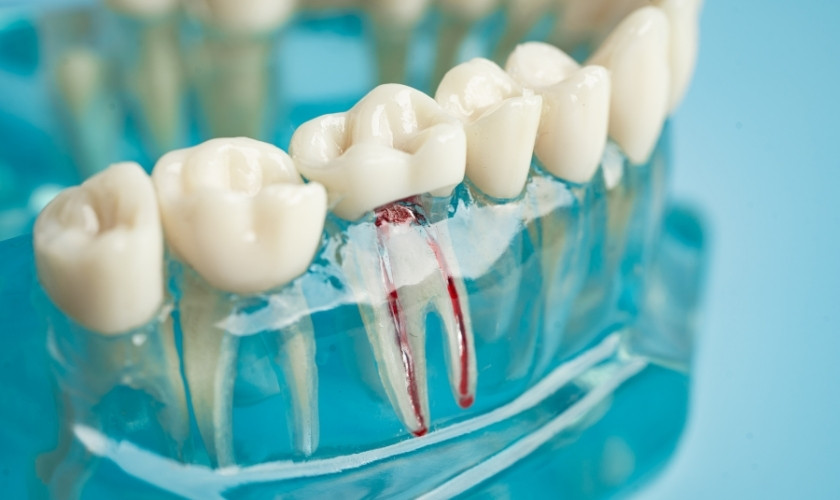
A root canal is a standard dental procedure to save a severely damaged or infected tooth. Dental health is vital to overall well-being, and addressing issues early can prevent more severe problems. Ignoring symptoms can lead to painful and expensive treatments later on.
This blog will help you identify signs that indicate you might need a root canal, ensuring timely intervention and preserving your tooth.
What is a Root Canal?
A root canal is a dental procedure that removes infected or damaged tissue from the inside of a tooth. When the pulp, the soft tissue inside your tooth, becomes infected due to decay or injury, it can cause severe pain and discomfort.
During the procedure, the dentist removes the infected pulp, cleans the tooth, and fills it with a material to restore its function. Root canals are essential in saving teeth that would otherwise need extraction. This procedure effectively alleviates pain and preserves natural teeth, providing long-term solutions for oral health.
Common Causes of Needing a Root Canal
Several factors can lead to the need for root canals Brooklyn. One of the most common causes is deep tooth decay. When cavities are left untreated, bacteria can infect the tooth pulp, leading to pain and infection. Trauma or injury to the tooth can also damage the pulp, requiring a root canal to restore the tooth’s health.
Cracked or broken teeth are another frequent cause. Even minor fractures can expose the pulp to infection, resulting in the need for a root canal. These conditions can cause severe discomfort, and timely treatment is essential to avoid further complications, including tooth loss.
Signs and Symptoms You Shouldn’t Ignore
1. Severe Tooth Pain: Severe tooth pain is often the first sign that you may need a root canal. This pain can be constant or intermittent and may vary from sharp to dull. It usually occurs when the pulp inside the tooth becomes infected or inflamed.
The pain often intensifies when you apply pressure, such as chewing or touching the tooth. Ignoring this pain can worsen the condition and lead to further complications.
2. Sensitivity to Heat or Cold: If you experience extreme sensitivity to hot or cold food and drinks, especially if the sensation lingers even after the stimulus is removed, it could indicate an infection or damage to the tooth pulp.
Healthy teeth might feel mildly sensitive to temperature changes, but prolonged discomfort could indicate that a root canal is necessary to save the tooth.
3. Discoloration of the Tooth: A tooth that becomes dark or discolored may signal pulp death. The pulp contains blood vessels and nerves that nourish the tooth, and when it dies due to infection, the tooth may turn a shade of gray or brown.
If you notice any discoloration, it’s essential to consult a dentist right away. A root canal can help restore the tooth to its natural appearance.
4. Swelling and Tender Gums: Swelling and tenderness around a tooth could indicate infection spreading to the surrounding tissue. Swollen gums may be painful and feel soft to the touch.
This condition often shows an abscess or infection near the tooth’s root. A root canal can remove the infected tissue and alleviate swelling and discomfort.
5. Recurring Pimples on the Gums: If you notice recurring pimples or abscesses on the gums near a specific tooth, it is a clear warning sign of infection. These pimples are often filled with pus, and their presence indicates that the body is fighting a disease caused by the damaged tooth.
The infection can spread if left untreated, making a root canal necessary to preserve the tooth.
6. Pain When Chewing or Touching the Tooth: Experiencing pain when chewing or touching a specific tooth is another sign that you might need a root canal. This pain often results from pressure that professionals apply to the damaged pulp inside the tooth. It can be sharp or dull and may worsen when chewing food or tapping the tooth.
Seeking treatment early can help prevent further damage and provide relief from discomfort.
How Does a Root Canal Relieve Pain?
The root canal procedure effectively relieves pain caused by infection or damage to the tooth pulp. The dentist removes the infected or dead pulp tissue inside the tooth. The space is thoroughly cleaned and disinfected to ensure that no bacteria remain.
After the tooth is cleaned, it is sealed to prevent future infections. The final step involves placing a crown on the tooth to restore its function and protect it from further damage.
Root canal procedures are typically painless, and most patients feel relief after closing the infection. The method allows you to keep your natural tooth, preventing the need for more invasive treatments like tooth extraction.
Recognizing the early signs that you might need a root canal is crucial in preventing further complications. Ignoring these symptoms can lead to more severe pain and the potential loss of your tooth.
If you experience any of the symptoms mentioned above, it’s essential to consult our dentists promptly. Scheduling an appointment can help ensure that your tooth is saved and that you avoid more invasive procedures in the future. Don’t wait – taking care of your dental health today can prevent costly treatments later.
